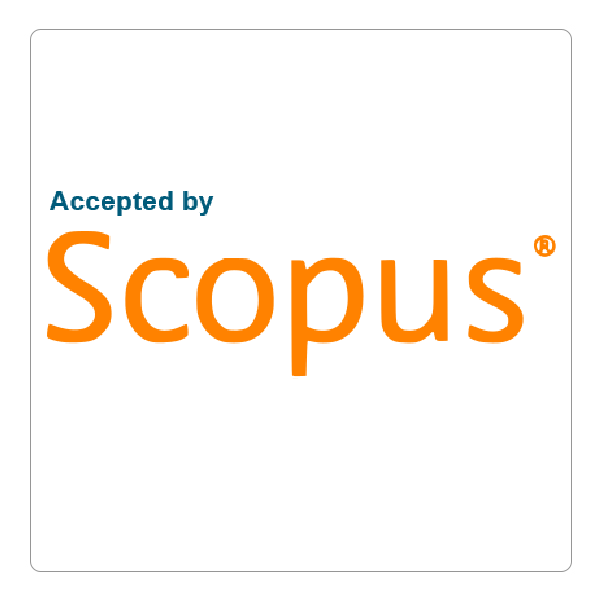How to Cite This Article
Saleh, Kochar K.; Abdullah, Saman R.; and Mekha, Rukhosh E.
(2019)
"Estimation of Serum Homeostasis Model Assessment-Insulin Resistance and Lipid Profile in Beta-thalassemia Major Patients and their Correlation with Iron Overload in Koya City,"
Polytechnic Journal: Vol. 9:
Iss.
2, Article 21.
DOI: https://doi.org/10.25156/ptj.v9n2y2019.pp125-132
Document Type
Original Article
Abstract
The current study focused on 43 patients who suffer from major beta-thalassemia at the hospital of shaheed Dr. Khaled in the Koya city. Out range, age of cases was 8.03 ± 4.0 and of controls was 7.81 ± 3.11 years. Our aim is to observe the prevalence of homeostasis model assessment-insulin resistance and other physiological and biochemical changes in major beta-thalassemia. While we a significant changes confirm that serum glucose concentration was significantly higher in the patients than in the controls (P ? 0.01) and lipid abnormality occurs in beta-thalassemia major patients, which include high-density lipoprotein-cholesterol (HDL-C), low-density lipoprotein-cholesterol (LDL-C), serum total cholesterol (TC), serum triglycerides (TG), and very-low-density lipoprotein (VLDL) levels compared with normal healthy controls. There was no significant difference between the serum insulin level of cases and controls (P = 0.214), the mean values of serum HDL-C, LDL-C, TC, TG, and VLDL in cases were 29.5 ± 7.8, 65.2 ± 1.9, 121.9 ± 36.7, 182.09 ± 43.1, and 26.47 ± 12.13 mg/dl, respectively. Moreover, the mean values of serum HDL-C, LDL-C, TC, TG, and VLDL in controls were 48.6 ± 4.2, 79.7 ± 14.5, 178.7 ± 14.6, 124.14 ± 12.1, and 23.52 ± 5.47 mg/dl, respectively. In conclusion, the results suggested that revealed that beta-thalassemia patients had hypertriglyceridemia, hypocholesterolemia, and low LDL-C, and HDL-C levels.
Publication Date
12-1-2019
References
Agarwal, S., A. Gupta, U. Gupta, S. Sarwai, S. Phadke and S. Agarwal. 2003. Prenatal diagnosis in beta-thalassemia: An Indian experience. Fetal Diagn. Ther. 18(5): 328-332.
Al-Quobaili, F. A. and I. E. A. Asali. 2004. Serum levels of lipids and lipoproteins in Syrian patients with beta-thalassemia major. Saudi Med. J. 25(7): 871-875.
Ambekar, S., M. Phadke, D. Balpande, G. Mokashi, V. Khedkar, M. Bankar and D. Basutkar. 2001. The prevalence and heterogeneity of beta thalassemia mutations in the western Maharashtra population: A hospital based study. Int. J. Hum. Genet. 1(3): 219-223.
Amendola, G., P. Danise, N. Todisco, G. D’urzo, A. Di Palma and R. Di Concilio. 2007. Lipid profile in β-thalassemia intermedia patients: Correlation with erythroid bone marrow activity. Int. J. Lab. Hematol. 29(3): 172-176.
Ariffin, A. A., K. A. Mahmood, M. S. Qadir, K. K. Saleh and K. M. Khudhir. 2017. Association between work-relate musculoskeletal disorder and ergonomic risk factors among nursing professionals in Ranya and Qalat Diza districts. Kurdistan J. Appl. Res. 2(2): 65-70.
Calandra, S., S. Bertolini, G. M. Pes, L. Deiana, P. Tarugi, L. Pisciotta and C. Maccarone. 2004. Β-thalassemia is a Modifying Factor of the Clinical Expression of Familial Hypercholesterolemia. Paper Presented at the Seminars in Vascular Medicine.
Danjou, F., F. Anni and R. Galanello. 2011. Beta-thalassemia: From genotype to phenotype. Haematologica. 96(11): 1573-1575.
Driscoll, M. C., A. Hurlet, L. Styles, V. McKie, B. Files, N. Olivieri and K. Patel. 2003. Stroke risk in siblings with sickle cell anemia.Blood. 101(6): 2401-2404.
Haghi, M., S. Khorshidi, M. A. H. Feizi, N. Pouladi and A. A. H. Feizi. 2009. β-Thalassemia mutations in the Iranian Kurdish population of Kurdistan and West Azerbaijan provinces. Hemoglobin. 33(2): 109-114.
Hashemieh, M., M. Javadzadeh, A. Shirkavand and K. Sheibani. 2011. Lipid profile in minor thalassemic patients: A historical cohort study. Bangladesh Med. Res. Counc. Bull. 37(1): 27-27.
Khaleel, K. J., A. A. Ahmed, M. M. Alwash and N. Y. Yaseen. 2013. Biomarkers and trace elements in beta thalassemia major. Iraqi J. Cancer Med. Genet. 6(1): 81-86.
Khattak, S. T. and J. Khan. 2004. Heterozygous beta thalassemia in parents of children with beta thalassemia major. Gomal J. Med. Sci. 4(2): 52-56.
Patne, A., P. Hisalkar and S. Gaikwad. 2012. Lipid abnormalities in patients of beta thalassaemia major. Int. J. Pharm. Sci. 2(1): 106-112.
Ricchi, P., M. Ammirabile, A. Spasiano, S. Costantini, T. Di Matola, P. Cinque, P and L. Prossomariti. 2009. Hypocholesterolemia in adult patients with thalassemia: A link with the severity of genotype in thalassemia intermedia patients. Eur. J. Haematol. 82(3): 219-222.
Seddon, J. M., U. A. Ajani, R. D. Sperduto, R. Hiller, N. Blair, T. C. Burton and D. T. Miller. 1994. Dietary carotenoids, Vitamins A, C, and E, and advanced age-related macular degeneration. JAMA. 272(18): 1413-1420.
Shams, S., M. T. H. Ashtiani, M. Monajemzadeh, L. Koochakzadeh, H. Irani, F. Jafari and A. Mohseni. 2010. Evaluation of serum insulin, glucose, lipid profile, and liver function in β-thalassemia major patients and their correlation with iron overload. Lab. Med. 41(8): 486-489.
Sutay, N. R. 2016. Study of serum lipid profile in beta-thalassemia major patients. J. Med. Sci. Clin. Res. 4: 17-20.
Thein, S. L. 2005. Pathophysiology of β thalassemia a guide to molecular therapies. Hematol. Am. Soc. Hematol. Educ. Program. 1: 31-37.
Tuzmen, S. and A. Schechter. 2001. Genetic diseases of hemoglobin: Diagnostic methods for elucidating β-thalassemia mutations. Blood Rev. 15(1): 19-29.
Weatherall, D. 2001. Phenotype genotype relationships in monogenic disease: Lessons from the thalassaemias. Nat. Rev. Genet. 2(4): 245.











Follow us: